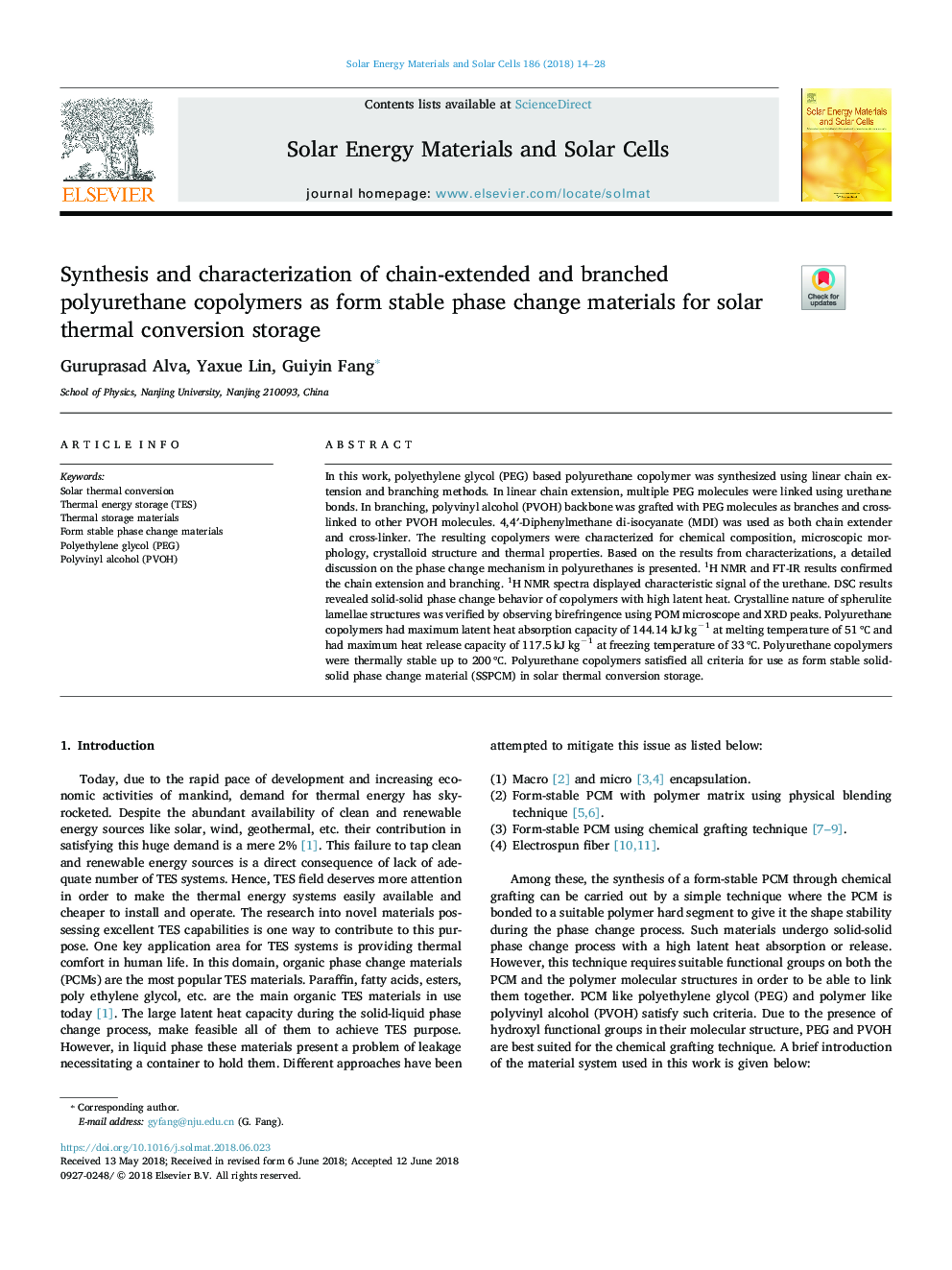| Article ID | Journal | Published Year | Pages | File Type |
|---|---|---|---|---|
| 6533802 | Solar Energy Materials and Solar Cells | 2018 | 15 Pages |
Abstract
In this work, polyethylene glycol (PEG) based polyurethane copolymer was synthesized using linear chain extension and branching methods. In linear chain extension, multiple PEG molecules were linked using urethane bonds. In branching, polyvinyl alcohol (PVOH) backbone was grafted with PEG molecules as branches and cross-linked to other PVOH molecules. 4,4â²-Diphenylmethane di-isocyanate (MDI) was used as both chain extender and cross-linker. The resulting copolymers were characterized for chemical composition, microscopic morphology, crystalloid structure and thermal properties. Based on the results from characterizations, a detailed discussion on the phase change mechanism in polyurethanes is presented. 1H NMR and FT-IR results confirmed the chain extension and branching. 1H NMR spectra displayed characteristic signal of the urethane. DSC results revealed solid-solid phase change behavior of copolymers with high latent heat. Crystalline nature of spherulite lamellae structures was verified by observing birefringence using POM microscope and XRD peaks. Polyurethane copolymers had maximum latent heat absorption capacity of 144.14â¯kJâ¯kgâ1 at melting temperature of 51â¯â and had maximum heat release capacity of 117.5â¯kJâ¯kgâ1 at freezing temperature of 33â¯â. Polyurethane copolymers were thermally stable up to 200â¯â. Polyurethane copolymers satisfied all criteria for use as form stable solid-solid phase change material (SSPCM) in solar thermal conversion storage.
Related Topics
Physical Sciences and Engineering
Chemical Engineering
Catalysis
Authors
Guruprasad Alva, Yaxue Lin, Guiyin Fang,
